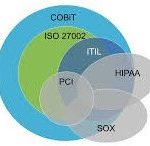ISO updates and the many uses and expectations for an improved framework
There is a massive demand for roadmaps and frameworks that provide knowledge about the personal data standards, IT and cyberSecurity Techniques and how to structure the privacy data and information, management and guidelines in databases and IT systems.
The purpose of the ISO standards is to define a control framework, e.g. the protection of personal data, or IT security issues that are adaptable in a continuously changing compliance environment.
GDPR, Data Privacy, Data Security, IT and Cybersecurity and The ISO Standards

ISO standard is a document that provides requirements, specifications, guidelines or characteristics that can be used consistently to ensure that materials, products, processes and services are fit for their purpose.
For business, they are strategic tools that reduce costs and ensure that policies, products and services are safe, reliable and of good quality. They help companies to identify risks, improve GRC structures and even access new markets.
The standards guide to ensure that policies consistently meet stakeholder requirements, and that process quality is continuously improved.
Checking that the system works is a vital part of ISO standards, and perform internal audits to check how its internal processes and system is working. An organization may decide to invite an independent certification body to verify that it conforms to the standard, or to audit the quality system for themselves.
Companies need guidance that provides an established and proven holistic foundation, to assess the design and efficiency of, e.g. internal controls for data- protection and privacy.
In general terms the ISO standard can be a big help and make a significant difference in the way we monitor and comply with GDPR and many other compliance mandates:
- Consolidate the GDPR and IT security controls and disclosures
- As a frequently used international framework to manage security after ISO27001 / ISO27002
- ISO is a comprehensive and extensive standard set of requirements
- Data subjects will impose additional obligations on data controllers, and data controllers will impose additional requirements for data processors as the conditions are now more natural to get an overview of
- If you are processing personal data for others, you should consider aligning your processes with all stakeholders based on a standard
- Define the ambition, and how to communicate, with whom, e.g. on the organization’s control maturity externally
- Understand and update the use of personal data in your organization based on your GDPR work
- Uncover contractual relationships with subcontractors and third parties
- Update existing internal controls to include personal data dimensions, and control objectives
- How to get a certification, to help strengthen the trust between the organization and the organization’s customers, suppliers and partners.


Comments